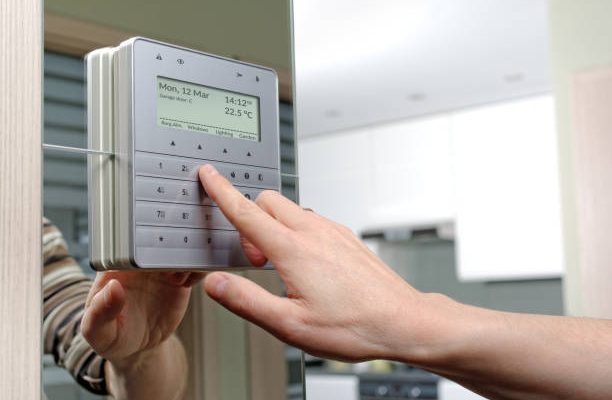Control sensors measure, monitor, and detect changes in physical conditions such as temperature, pressure, and force. These sensors have become increasingly important in developing automation and robotics, allowing for precise and accurate control of machines and processes. In industrial automation, control sensors are an essential part of any automation system. They are used to measure, monitor, and control various processes and systems.
Control sensors play an important role in many industrial and consumer applications. They detect changes in the environment or within a system and activate a response based on those changes. In this blog post, we’ll take a look at the main types of control sensors, their applications, and how they can help improve efficiency, accuracy, and safety. We’ll also discuss the various types of sensors available and how they can be used to measure physical properties such as pressure, temperature, and motion.
Temperature sensor
Temperature is a variable that needs to be measured both as the primary variable and as a secondary variable that needs to be monitored as a safety measure in another application. Temperature sensors are used to measure and monitor the temperature.
There are many approvals needed for various types of temperature sensors. Medical authorization will be necessary for temperatures used to monitor patients or within medical equipment. Thermistors, probes, thermocouples, RTDs, and temperature transducers are just a few examples of the many diverse sizes, types, and shapes that temperature sensors can take.
Pressure sensor
A pressure sensor is a device that detects the pressure of gases or liquids. Pressure, typically expressed in force per unit area, is a measure of the force necessary to prevent fluid from expanding. Typically, a pressure sensor functions as a transducer, producing a signal in response to the applied pressure.
A pressure sensor is an electronic gadget that detects, controls, or monitors pressure and transforms sensed physical information into an electrical output.
Many businesses employ pressure sensors, which measure the pressure in gases, liquids, or solids. Pressure can be gauged as gauge, differential, absolute, or vacuum pressure, and it can be expressed in bars or pounds per square inch (PSI). Belimo sensors are a perfect example of a pressure sensor.
Level sensor
A level sensor is a control sensor that measures the level of a liquid or a solid in a container. It can measure the volume or depth of material inside a tank, bin, hopper, or silo. Level sensors work by detecting changes in the pressure of the material they are measuring and then outputting an electrical signal proportional to the measured level. The most common types of level sensors are float switches, ultrasonic level sensors, capacitance level sensors, and pressure transducers.
Flow sensor
Flow sensors are an instrument used to gauge the rate at which a liquid or gas moves through a pipe or conduit. A flexible cuff wrapped around the vessel whose flow rate needs to be recorded often contains implantable flow sensors.
The regulation of several industrial processes and machines’ optimal performance and efficiency depend on flow measurement. Flow sensors are used in automobiles to detect the air intake to the engine and modify the fuel delivery to the fuel injectors to give the correct fuel mixture to the engine. Medical ventilators use flow sensors to determine the proper oxygen or air supply rate for people who need help breathing.
Displacement sensor
A displacement sensor is a type of functional devices sensors used to measure the distance or movement between two points. It detects changes in physical parameters such as force, torque, pressure, vibration, and temperature.
A displacement sensor is a tool that calculates the separation between itself and an object by calculating the displacement through several different parts. In addition to measuring travel range, displacement sensors can also measure an object’s height, thickness, and width.
Position sensor
A position sensor is a device that can track the movement of an item and transform that information into signals that may be processed, sent, or controlled. The leading producer of industrial linear and angular position, tilt, and fluid level sensors are TE Connectivity (TE).
Using a wide variety of sensing technologies, position sensors can monitor linear or rotating positions. Position sensors are utilized in many applications; anything that calls for measuring movement will employ a particular position sensor.
Speed sensor
A speed sensor is an electronic device used to measure the rotational speed of a mechanical component. It is typically used in automobile engines, air compressors, and electric motors. Speed sensors can also monitor a moving object’s speed, such as a conveyor belt or roller coaster. The output of a speed sensor is usually an analog signal or pulse train that a microcontroller or other electronic device can read.
Torque sensor
A torque sensor is a device that measures the amount of rotational force applied to an object, also known as torque or moment. Torque sensors are commonly used in applications such as motor control and robotics, as well as in automotive, aerospace, and industrial settings. They can be used to measure the speed, acceleration, or position of a rotating object, as well as to detect the amount of strain or twist applied to a shaft or axle.
Force sensor
A force sensor is a transducer that produces an electrical signal by transducing an input mechanical load, weight, tension, compression, or pressure. Force sensors convert applied mechanical forces, such as tensile and compressive forces, into output signals whose value may be used to indicate the force’s size. The signals may be delivered to indicators, controllers, or computers to notify operators or act as inputs for controlling machinery and processes.
Force sensors come in various sizes and can measure forces ranging from a few hundred grams to hundreds of tons. Bathroom scales, musical instruments, medical gadgets, autos to detect seat occupancy, and process control in industrial facilities are just a few of the many applications that use these devices.
Vibration sensor
A vibration sensor is a control sensor used to measure the frequency and intensity of vibration in a particular machine, system, or equipment. Vibration is detected using vibration sensors, which are also piezoelectric accelerometers. They can measure both ordinary vibrations and different accelerations and speeds.
Through the application of the piezoelectric effect, they have a transducer that transforms mechanical force brought on by vibration or a change in motion into an electrical current. High-impedance accelerometers generate an electrical charge directly coupled to the measuring devices.
Conclusion
Control sensors are essential in many areas of modern engineering, including process control, automated machines, robotics, and industrial automation. They measure physical parameters such as temperature, pressure, level, flow, displacement, position, speed, torque, force, and vibration. Each type of sensor has its own set of advantages and limitations that must be considered when selecting the right type for an application. With the wide variety of control sensors available on the market today, like the Dwyer sensors brand, it is important to understand their functions to make the most of their capabilities and ensure the most accurate and reliable results.




















